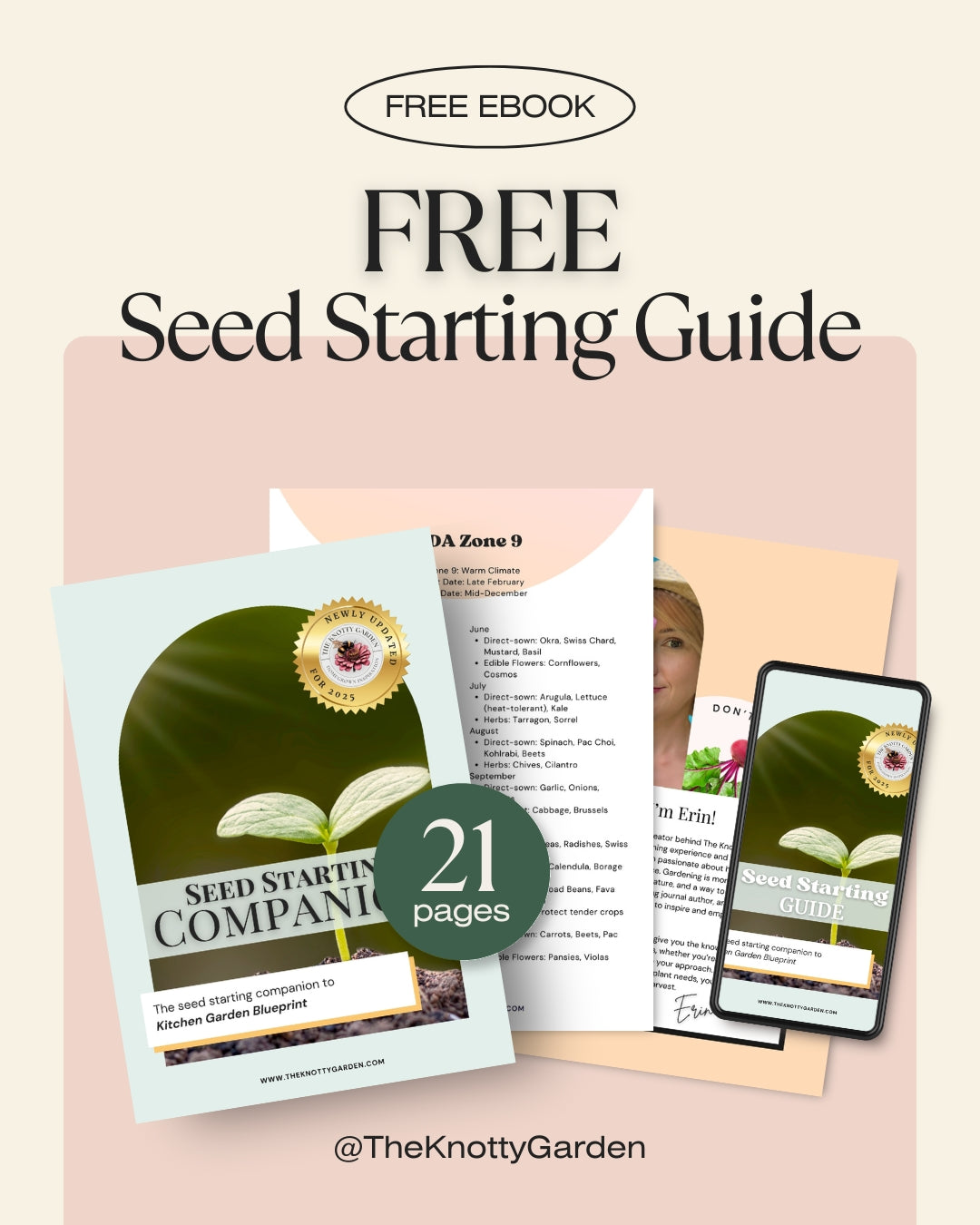If you're new here, don't forget to sign up for my newsletter at the bottom of the page so that you don't miss out on my space- and time-saving gardening tips! When you sign up you will also receive a FREE seed starting guide with recommendations by zone and frost date.
There’s something deeply satisfying about growing garlic. It’s one of my favorite crops, and this year, my Russian Red garlic is thriving. I’ve dedicated half a bed to it, and the payoff is already delicious. I’ve harvested all the scapes, which I’ve turned into frozen compound butter, powdered garlic scapes, and a jar of homemade garlic scape sea salt that’s practically a kitchen treasure.
But now we’re heading into the best part—garlic harvest.
If you’re new to growing garlic or just want to make the most of your crop, here’s everything you need to know about harvesting, replanting, and storing it properly.
🧄 How to Know When Garlic is Ready to Harvest
Garlic doesn’t follow a calendar. It follows cues from the weather and your soil. So instead of counting days, I watch the leaves.
When the bottom three or four leaves start to yellow or dry out but the upper ones are still green, it’s time to get ready. This balance means the bulbs are mature, but they still have enough protective wrappers to store well.
Each leaf corresponds to a wrapper layer on the bulb, so if too many leaves die back, the garlic won't store as long. On the flip side, harvesting too early can result in small or underdeveloped cloves.
I always dig one test bulb before committing to a full harvest. If the cloves are defined and the wrappers look tight, it’s a go.
🪛 Tips for Harvesting Garlic
Once you’ve confirmed it’s ready, here’s how to harvest gently and successfully:
-
Use a hori-hori knife or garden fork to loosen the soil around the bulb. Avoid pulling garlic straight from the stem to prevent damage.
-
Gently lift the bulb and shake off the soil. Don’t wash the garlic at this stage.
-
Cure your garlic in a shady, dry, and well-ventilated area for two to three weeks. I hang mine in small bundles in the shade of a tree or on wire racks in the shade.
This step allows the outer layers to dry and the flavor to intensify.
🌱 What to Plant After Garlic
Garlic is a wonderful crop for succession planting. Once harvested, the soil is usually in great shape—friable, nutrient-rich, and full of microbial activity thanks to mulch and compost.
I give the bed a quick refresh with compost and immediately follow up with fall crops. A few great options to plant after garlic include:
-
Beets
-
Kale
-
Swiss chard
-
Kohlrabi
-
Turnips
-
Lettuce
-
Cilantro
-
Carrots (if direct sowing)
Succession planting like this keeps your beds productive while extending your harvest season well into fall and even winter.
🧄 How to Save Garlic to Replant
One of the best ways to improve your garlic harvest year after year is to save your own planting stock.
Choose your biggest, healthiest bulbs for replanting. These represent the strongest genetics for your specific soil and climate, especially with heirloom types like Russian Red.
Store your seed garlic separately and mark it clearly so you don’t accidentally cook with it. Keep the bulbs whole until just before planting in the fall, then break them into individual cloves.
By selecting and replanting your best garlic each season, you’ll gradually grow a crop that is uniquely adapted to your garden.
🏡 How to Store Garlic
Once your garlic has cured, trim the stems and roots and gently remove any dirty or loose outer wrappers. Then store the bulbs:
-
In a cool, dry, and dark place
-
In mesh bags, baskets, or breathable containers
-
Away from moisture and sunlight
Avoid putting garlic in the fridge. The humidity can cause it to sprout or rot. Properly cured garlic can store for six to eight months or longer, depending on the variety and storage conditions.
✨ Final Thoughts
Growing garlic connects me to the rhythm of the seasons like no other crop. You plant it in the quiet of fall, watch it stretch through spring, and harvest it in high summer. It holds the memory of a full year in its cloves.
Every part of it is useful—from the scapes to the bulbs to the soil it leaves behind. And every season, it teaches me something new.
If you’ve never tried growing garlic before, I hope you give it a go. It might just become your favorite too.
From my garlic patch to yours,
🌸 Erin


